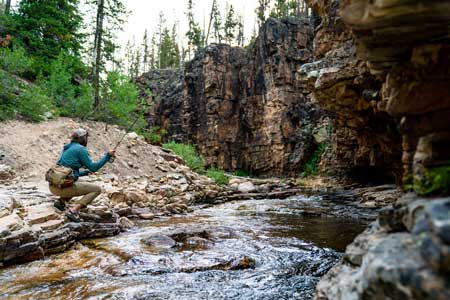
What You Can Catch
Rainbow trout, Brown trout, Cutthrouat trout, Brook trout, Mountain Whitefish
Where You Can Go
The Upper Provo River, flowing from the Uinta Mountains down toward Jordanelle Reservoir, offers a more remote and scenic fishing experience compared to the middle and lower sections. Popular access points include stretches along the Mirror Lake Highway (Hwy 150), where numerous pull-offs and campgrounds provide easy entry to the river. Up high, near Soapstone Basin and Woodland, anglers can find brook trout, cutthroat trout, and smaller browns in fast, freestone water. Further upstream in the headwaters and meadow sections, such as around Mirror Lake, Trial Lake, and Lilly Lake, fishing tends to be smaller in size but abundant, making it a great spot for light tackle or fly fishing with dry flies. The river here is highly seasonal, with peak flows in late spring from snowmelt and more approachable water levels in late summer and fall. While fish in the Upper Provo are typically smaller than those found in the middle and lower stretches, the combination of wild trout, solitude, and high alpine scenery makes this section a favorite for anglers seeking a true mountain stream experience.
What You Can Use
Fly fishing
How You Can Do It
Euro nymphing
Regulations
The Provo River is managed as a blue-ribbon fishery, and anglers should be aware of special regulations that vary by section. Throughout much of the river—especially the popular Middle Provo and Lower Provo stretches—artificial flies and lures only are allowed, which means bait fishing is prohibited. There are also size and harvest limits in place to protect the trout populations: typically, only a small number of trout may be kept, and many stretches are catch-and-release for certain species, especially brown and rainbow trout. The Upper Provo, by contrast, has more general regulations and allows bait in some areas, though limits still apply. Statewide rules, such as requiring a valid Utah fishing license and following daily bag limits, apply to all sections. Because regulations can change from year to year, anglers should always check the latest Utah Division of Wildlife Resources (UDWR) fishing guidebook before heading out to ensure they’re in compliance.